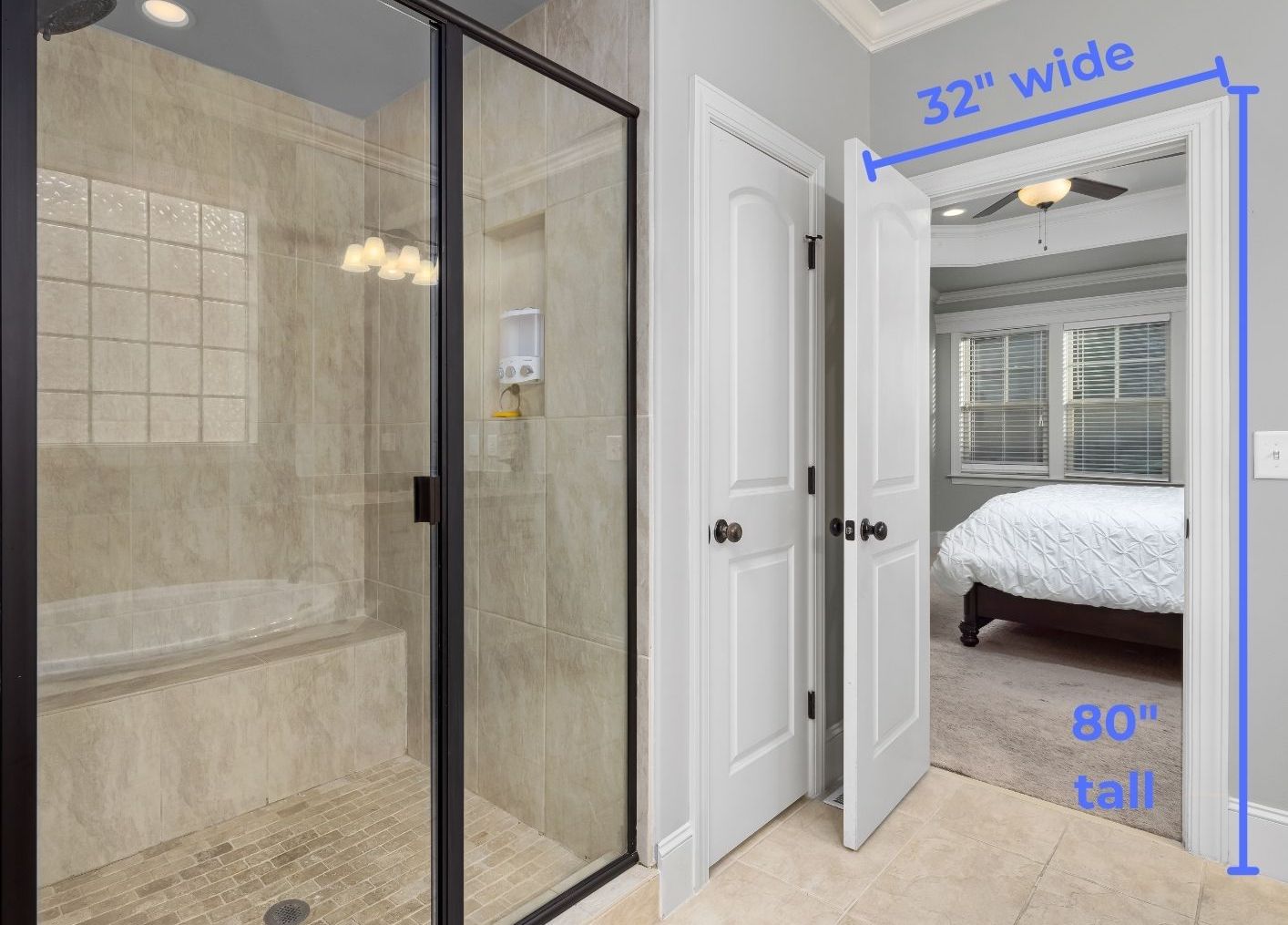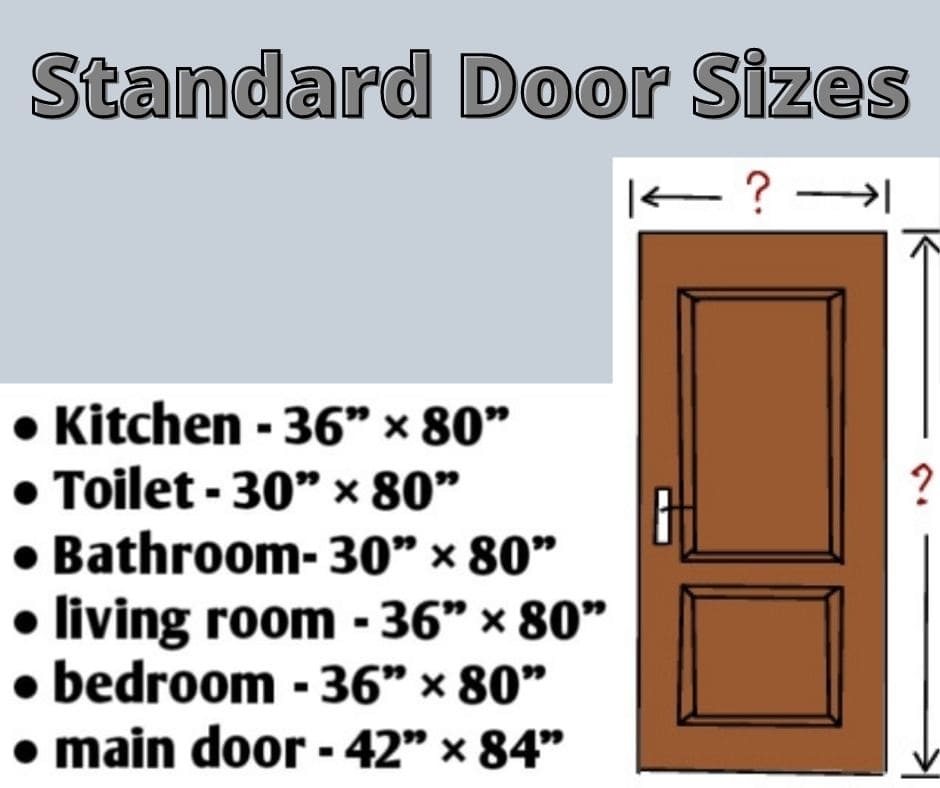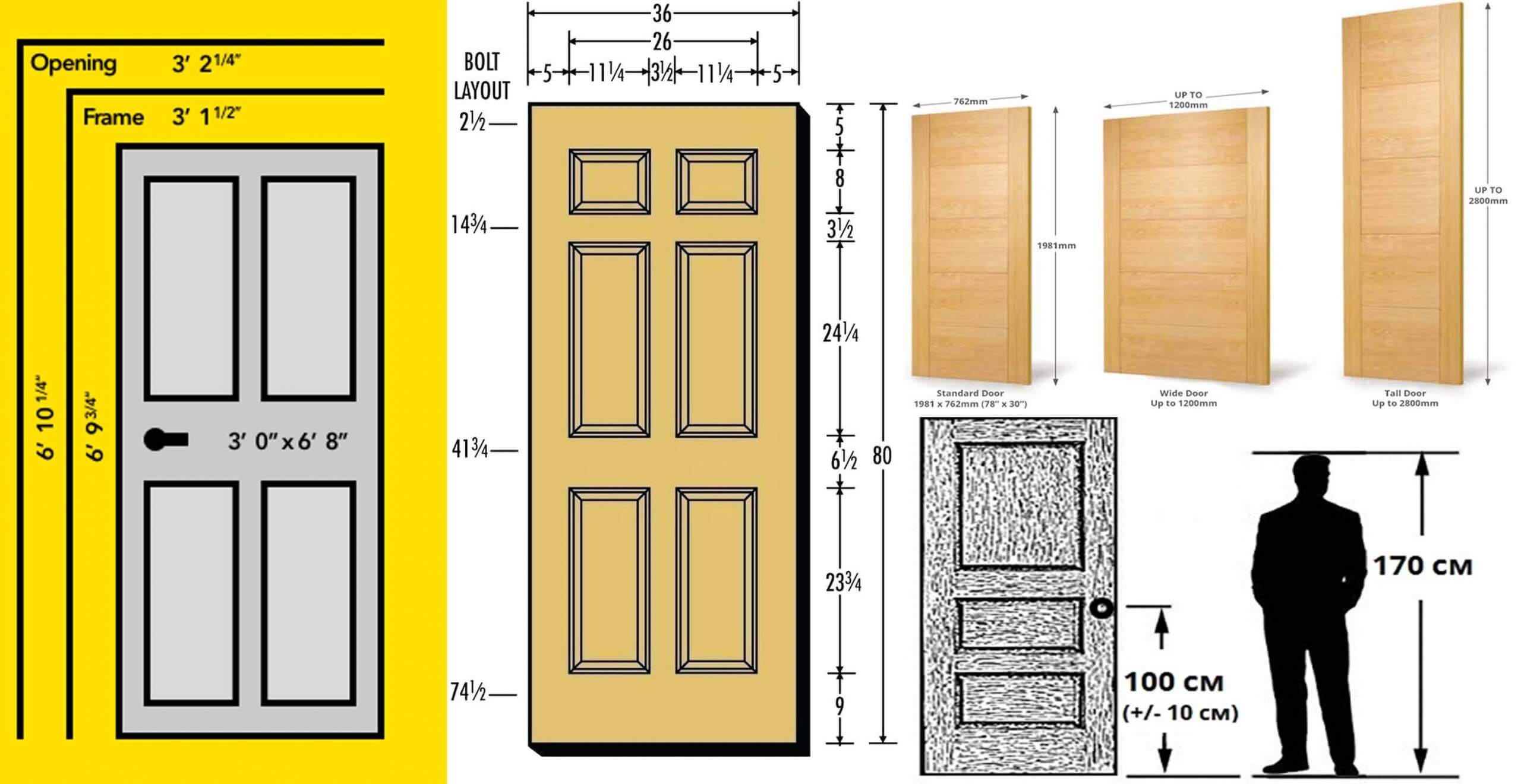Standard Bathroom Door Widths: Typical Bathroom Door Width

The standard width of bathroom doors can vary depending on the region and the type of building. However, there are some common standards that are widely used in various parts of the world. This article will explore the standard bathroom door widths in the United States, Europe, and other major countries, comparing the differences and explaining the rationale behind these variations.
Standard Bathroom Door Widths in the United States
In the United States, the most common standard bathroom door width is 32 inches (81 cm). This width is typically used in residential homes, and it is considered to be a good balance between providing adequate access and maximizing space.
- In some cases, 30 inches (76 cm) may be used in smaller bathrooms or for budget-friendly homes.
- However, it is generally recommended to use a 32-inch door for accessibility reasons, as it allows for easier movement with luggage or for individuals with mobility issues.
Standard Bathroom Door Widths in Europe
In Europe, the standard bathroom door width is typically 75 cm (29.5 inches), although it can vary depending on the country.
- For instance, in France, the standard width is 80 cm (31.5 inches), while in Germany, it is 73 cm (28.7 inches).
- These variations can be attributed to different building codes and cultural preferences.
Standard Bathroom Door Widths in Other Countries
In other countries, the standard bathroom door width can vary widely.
- In Australia, the standard width is 80 cm (31.5 inches), while in Japan, it is 75 cm (29.5 inches).
- These differences reflect the varying needs and preferences of different cultures.
Factors Influencing Standard Bathroom Door Widths
The standard bathroom door width is influenced by several factors, including:
- Accessibility: In recent years, there has been a growing emphasis on accessibility, which has led to wider door widths being recommended for bathrooms. This is particularly important for individuals with disabilities or mobility limitations, as it allows them to move through the doorway with ease.
- Space constraints: In smaller bathrooms, the available space can limit the width of the door. In such cases, a narrower door may be necessary to maximize the usable area within the bathroom.
- Building codes: Building codes in different countries and regions can specify minimum door widths for bathrooms. These codes are designed to ensure that the bathrooms are safe and accessible for all users.
- Cultural preferences: Different cultures may have different preferences for bathroom door widths. For example, in some cultures, wider doors are considered to be more luxurious and spacious, while in others, narrower doors are more common.
Most Frequently Used Standard Width, Typical bathroom door width
The most frequently used standard width for bathroom doors in residential settings is 32 inches (81 cm) in the United States and 75 cm (29.5 inches) in Europe. This is due to the balance it provides between accessibility and space optimization.
Factors Influencing Bathroom Door Width

The width of a bathroom door is not just a matter of aesthetics; it significantly impacts functionality, accessibility, and overall user experience. Several factors influence the ideal bathroom door width, each playing a crucial role in creating a comfortable and safe space.
Accessibility Requirements
Accessibility is a critical consideration when determining bathroom door width. The Americans with Disabilities Act (ADA) sets standards for accessible design, ensuring that people with disabilities can easily navigate and use spaces. The ADA mandates a minimum clear opening width of 32 inches for doorways, which allows for wheelchair access and maneuvering. This requirement ensures that the bathroom is accessible to individuals with mobility impairments.
Bathroom Door Width for Different Applications

The standard bathroom door width may vary depending on the application, such as single-family homes, multi-family dwellings, or commercial spaces. The appropriate width considers factors like accessibility, traffic flow, and the overall size of the bathroom.
Bathroom Door Width for Different Applications
Different applications necessitate different bathroom door widths to accommodate varying needs and user profiles. The table below provides examples of typical door widths used in various settings:
| Application Type | Typical Door Width | Considerations |
|---|---|---|
| Single-Family Homes | 28-32 inches | Typically used for smaller bathrooms with minimal traffic. This width provides sufficient space for one person to pass through comfortably. |
| Multi-Family Dwellings | 32-36 inches | Commonly used for larger bathrooms with higher traffic. This width accommodates comfortable movement for one person, allowing for easier access with luggage or bulky items. |
| Commercial Spaces | 36 inches or wider | Essential for public restrooms, accommodating high traffic and accessibility needs. Wider doors facilitate easier movement for people with disabilities and those carrying large items. |
Visual Representation of Bathroom Size and Door Width:
Diagram:
[Description of the diagram here]
The diagram visually represents the relationship between bathroom size and door width for different applications. It shows that as the bathroom size increases, the recommended door width also increases to ensure comfortable movement and accessibility. The diagram further illustrates the difference in door widths between single-family homes, multi-family dwellings, and commercial spaces.
The typical bathroom door width is 32 inches, providing ample space for movement and accessibility. This standard dimension allows for a comfortable entry and exit, especially when considering the often-limited space of a bathroom. However, incorporating a bold design element, such as navy blue wallpaper bathroom , can transform the space into a luxurious and inviting sanctuary.
While the door width remains a practical consideration, the wallpaper choice enhances the overall aesthetic appeal and creates a unique ambiance, making the bathroom a more enjoyable experience.
The typical bathroom door width in commercial settings is often dictated by accessibility guidelines, ensuring ease of access for individuals with disabilities. However, the design of the door itself can be enhanced by incorporating commercial bathroom door signs that clearly communicate the room’s function.
These signs not only provide essential information but also contribute to the overall aesthetics and professionalism of the space, ultimately enhancing the user experience within the bathroom.